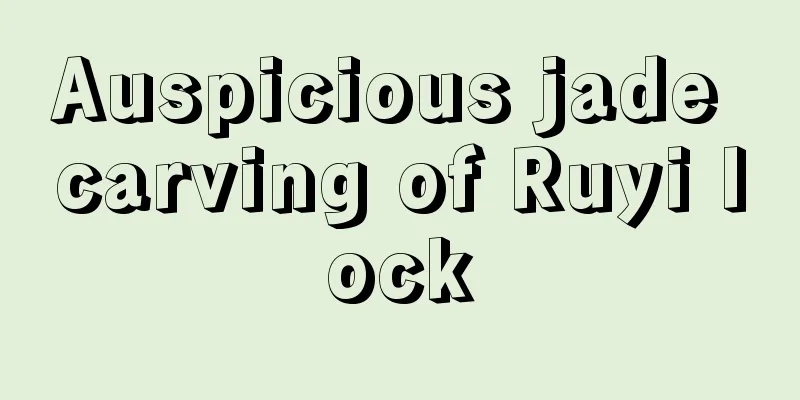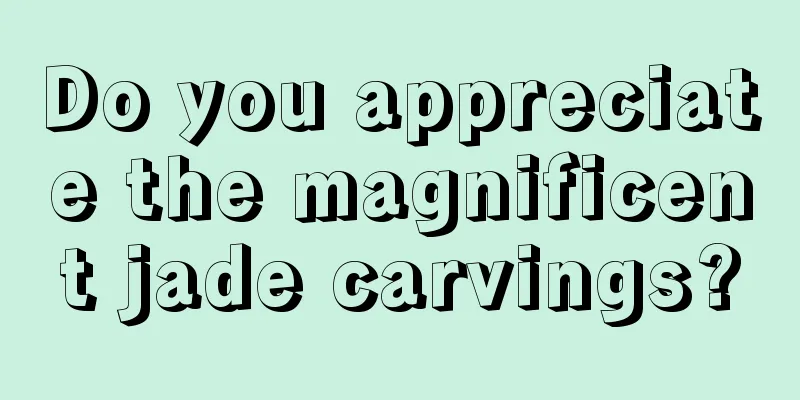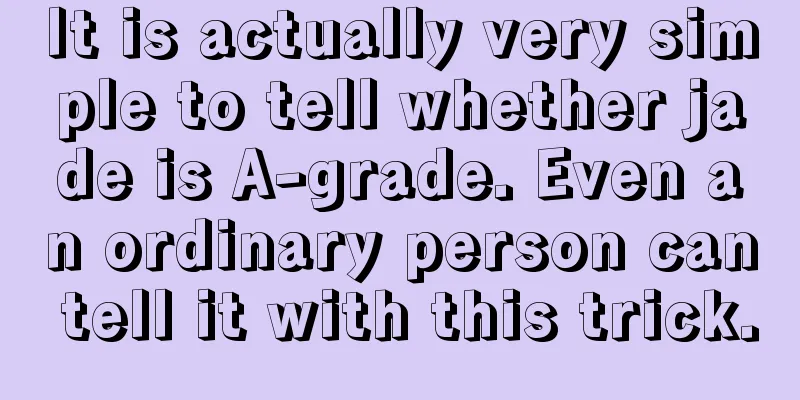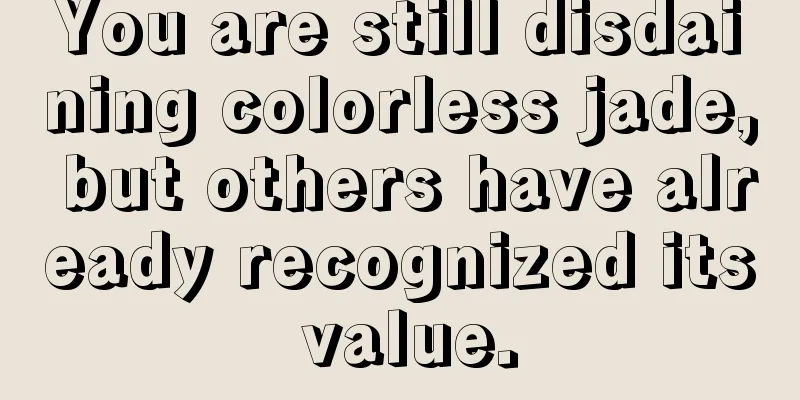Auspicious jade carving of Ruyi lock

|
The shape of Ruyi is a head made of cloud patterns and Ganoderma lucidum with a long handle connected to it. The original " Ruyi " evolved from the ancient hu and scratching stick. At that time, people used it to scratch the itchy places that their hands could not reach, and it could satisfy people's wishes, so it was named "Ruyi". "Ruyi" is a relatively special jade carving and is a traditional auspicious object in my country. The Chinese civilization has been brilliant for five thousand years. The jade culture has never been interrupted in this long river of history, and the jade carving craftsmanship has gradually matured in the course of thousands of years of development. As the saying goes: "Jade must be crafted, the craftsmanship must have meaning, and the meaning must be auspicious!" People often use jade to pray for blessings and express good wishes. Today we will talk about a common pattern in jade carvings - Ruyi. The Qing Dynasty's "Catalogue of Different Names of Things" says: "Ruyi is the ancient claw stick." The original "Ruyi" evolved from the ancient hu and scratching stick. At that time, people used it to scratch the itchy places that their hands couldn't reach, and it could satisfy people's wishes, so it was called Ruyi. It is commonly known as "Buqiuren" and because of its beautiful meaning, it has been widely used from the court to the folk. It is a precious object that integrates court etiquette, folk exchanges, and display and appreciation. The shapes of jade Ruyi pendants that we often see now are mostly evolved from Ganoderma lucidum and auspicious clouds. Ganoderma lucidum, as a precious fungus plant that can be used as medicine and food, has been praised by people from ancient times to the present; and auspicious clouds are clouds that symbolize auspiciousness, and auspiciousness is explained in the Book of Changes as "changing clouds are auspicious events with auspicious signs." The Ruyi shape can be used as a pendant theme, implying good luck, health and success, and can also appear as an auspicious accessory in other patterns: carving a swan with a Ganoderma lucidum in its mouth means "I am as I wish"; carving ginseng as a design theme with Ganoderma lucidum hanging on its body means "a happy life, good luck and health"; carving longevity peaches and using the Ganoderma lucidum shape to express the peach branch on the top means "happiness and longevity" and is also known as "being satisfied".
fruit fcgc33 |
<<: Carving craftsmanship: the breathtaking beauty of the world of jade
>>: Jade is a woman's lifelong lover
Recommend
Share the creation process of a piece of top-quality yellow-green jadeite
As the saying goes, "If jade is not carved, ...
The master used the leftover high-quality ice jadeite from a friend's cutting to create an ancient tooth with his ingenious idea!
After the jadeite raw stone is cut and the finish...
What is the Jieyang craftsmanship in jade? What are the characteristics of Jieyang workers?
When many jade lovers buy jade carvings, they sho...
The beautiful Mu Na snowflake cotton, what is its essence? Pay attention to this point!
As the saying goes, “There is no jade without cot...
How to identify ice jadeite?
Because ice jade is very popular among consumers ...
Collection ▏It’s time to learn about jadeite!
Jadeite, also known as jadeite jade, jadeite and ...
The beauty of jade carvings, how many types of jade carvings have you seen?
The eternal spring scenery has a strong Lingnan f...
A piece of floating flower jadeite rough material, cut out a leaf, live broadcast the process!
Look at this piece of old mine floating flower ja...
The ice jadeite I bought for hundreds of thousands of dollars turned out to be a fake? Be careful not to buy this stone as expensive jadeite
I heard a sad story yesterday. A rich man who had...
Some people's jade becomes greener the more they wear it, while others' jade becomes darker the more they wear it. Experts will tell you why!
Many people like to buy and wear jade jewelry, bu...
Appreciating the relief in jade carving
Bo Yi is gradually evolved from the relief techni...
Did you know that there are four steps to identify jadeite: “look, smell, ask, and feel”?
Identifying jadeite is like Chinese medicine. The...
Five tips for investing in jadeite gambling
The reason why gambling on stones attracts collec...
Three short stories about jade
The Great Wall still stands today, and the brave ...
Jade is the best gift, but do you know how to give jade as a gift?
Jade has a variety of patterns and is deeply love...









